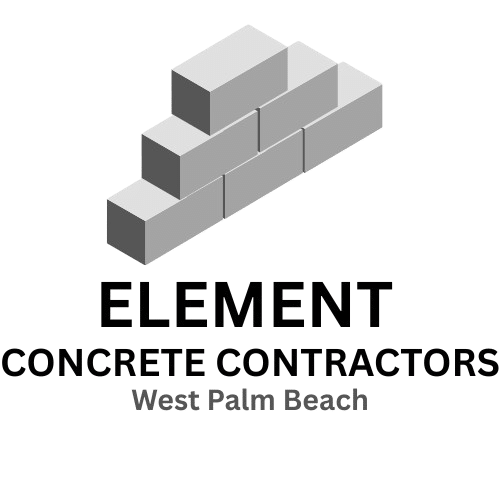concrete walkway
Elevate your property’s charm and safety with a thoughtfully designed concrete walkway, offering a robust, low-maintenance pathway that instantly boosts curb appeal. Many homeowners and business owners face challenges with uneven ground, cracked surfaces, and limited design choices for pedestrian routes. This comprehensive guide tackles these issues head-on by defining what a concrete walkway entails, exploring captivating design possibilities, detailing professional repair methods, and showcasing stamped concrete finishes for enduring elegance. You’ll learn how local West Palm Beach expertise guarantees a solid foundation, how personalized options like color and texture create distinctive styles, and why prompt repairs extend your walkway’s life. Whether you’re envisioning a brand-new installation, a refresh for an aging path, or a decorative upgrade, this article guides you through every phase—from initial concept to final restoration—empowering you to confidently collaborate with skilled professionals.
Key Takeaways
- Concrete walkways offer durability and aesthetic appeal for residential and commercial properties
- Stamped concrete provides versatile, low-maintenance options mimicking brick or natural stone for walkways
- Professional repair services address cracks, chips, and uneven surfaces to restore concrete walkway integrity
- Regular maintenance, including cleaning and sealing, extends the lifespan of concrete walkways
- Stamped concrete installation involves pouring, coloring, patterning, and sealing for elegant, durable walkways
Concrete Walkway Ideas
Discover popular concrete walkway styles below, blending aesthetics with practicality to enhance your outdoor space.
- A smooth broom finish walkway offers subtle texture for improved traction and a clean, contemporary look.
- An exposed aggregate pathway highlights natural stone fragments for a textured, decorative surface that complements garden settings.
- A colored and tinted concrete path allows property owners to harmonize walkway shades with their home’s exterior or existing pavers.
- A flowing ribbon design creates a natural path through lawns and garden beds, softening sharp architectural lines.
Each concept balances visual appeal with essential considerations like maintenance requirements and climate suitability. These design inspirations naturally lead into the methods for maintaining and repairing existing walkways when wear and tear become apparent.
Walkway Repair
Repairing a concrete walkway revitalizes its safety and extends its service life by addressing issues like cracks, settling, and surface degradation. Crack injection involves using epoxy or polyurethane to seal fissures and prevent water intrusion, while mudjacking—also known as concrete lifting—raises sunken slabs by injecting a stabilizing grout underneath. Protective sealants applied after minor patching shield the repaired sections from future erosion and damage caused by temperature fluctuations. Certified contractors assess the slab’s condition, pinpoint underlying soil instability, and select the most effective repair strategy for a flawless outcome.
When undertaking repairs, professionals typically employ these key techniques:
| Method | Procedure | Benefit |
| Crack Injection | Injecting epoxy or foam into structural cracks | Seals out water and prevents crack widening |
| Mudjacking | Pumping grout beneath settled slabs | Restores a level surface without complete replacement |
| Surface Resurfacing | Applying a thin overlay to worn concrete | Renews the appearance and prolongs usability |
These repair methods ensure walkway stability and prepare surfaces for decorative enhancements. Understanding these restoration techniques naturally leads to exploring the possibilities of decorative stamped concrete walkways.
Stamped Concrete Walkway
A stamped concrete walkway integrates standard concrete installation with imprinted designs and color applications to replicate the look of natural stone, brick, or wood. During the initial curing process, flexible stamps are pressed into the surface, creating textured patterns that mimic flagstone, cobblestone, or wood plank styles. Integral colors or dry-shake pigments are used to add depth and variation, while protective sealers lock in the colors and shield against moisture and UV damage.
Pattern imprinted concrete (PIC), commonly known as stamped concrete, combines decorative effects achieved through imprinting patterns with the addition of color.
Stamped ConcreteFinishes for Pedestrian Pathways: Design and Aesthetic ConsiderationsThe technique known as pattern imprinted concrete (PIC), also referred to as stamped concrete, combines decorative effects achieved through imprinting patterns and the addition of colour. ThisDriveways, Paths and Patios, Unknown Author, 2011
Popular stamped concrete patterns include:
| Pattern | Visual Description | Advantage |
| Flagstone | Irregular, natural stone shapes | Provides rustic elegance and organic visual flow |
| Cobblestone | Rounded, closely spaced units | Offers historic charm and enhanced slip resistance |
| Wood Plank | Linear grain and distinct plank texture | Delivers a warm, natural aesthetic with superior durability |
By selecting stamped concrete, property owners achieve a custom walkway that resists the peeling or shifting common with pavers, while offering an extensive range of textures and colors. This decorative option not only elevates the visual appeal but also strengthens the walkway’s overall structural integrity.
While solid concrete walkways have historically been a popular choice, a comparative analysis reveals a growing trend towards interlocking paving stones due to increasing demands for aesthetic appeal and contemporary design.
